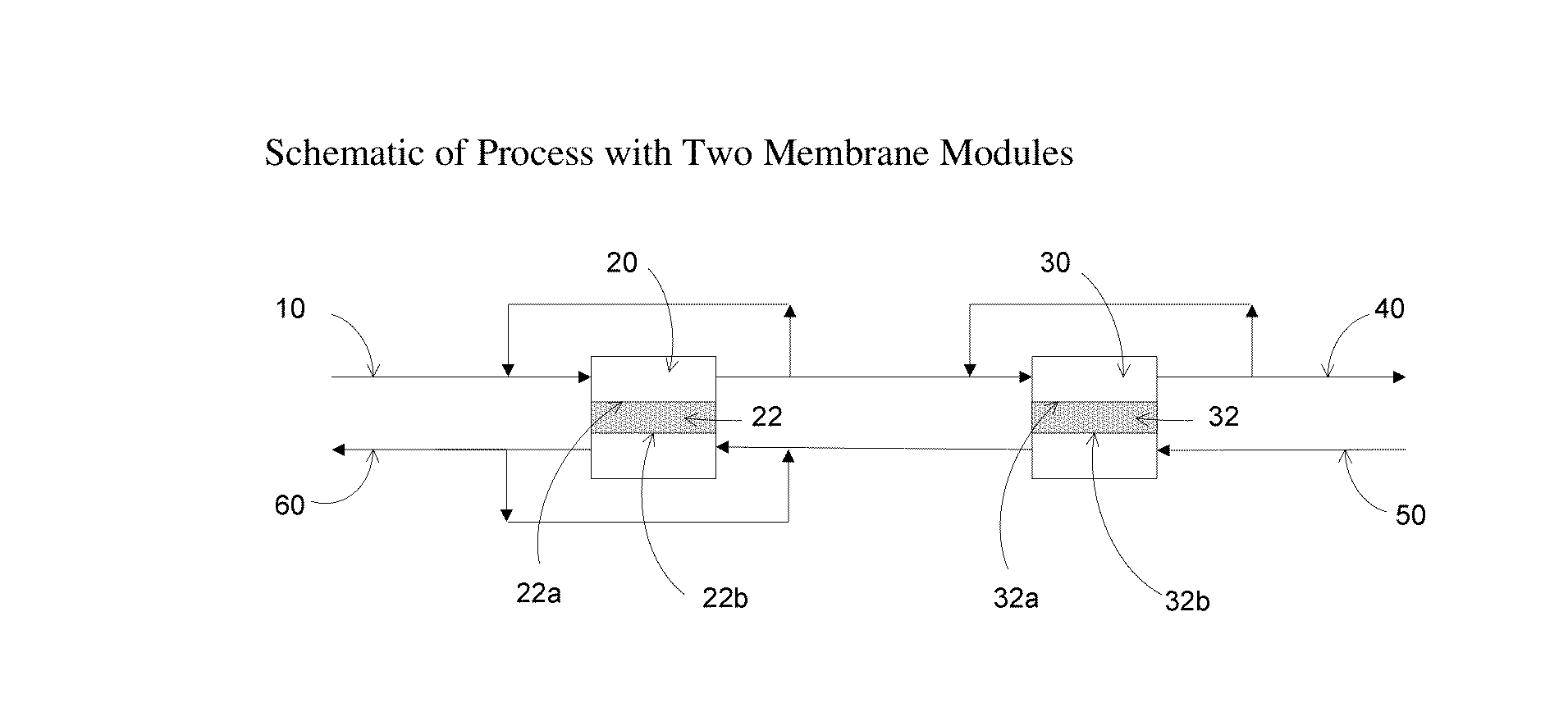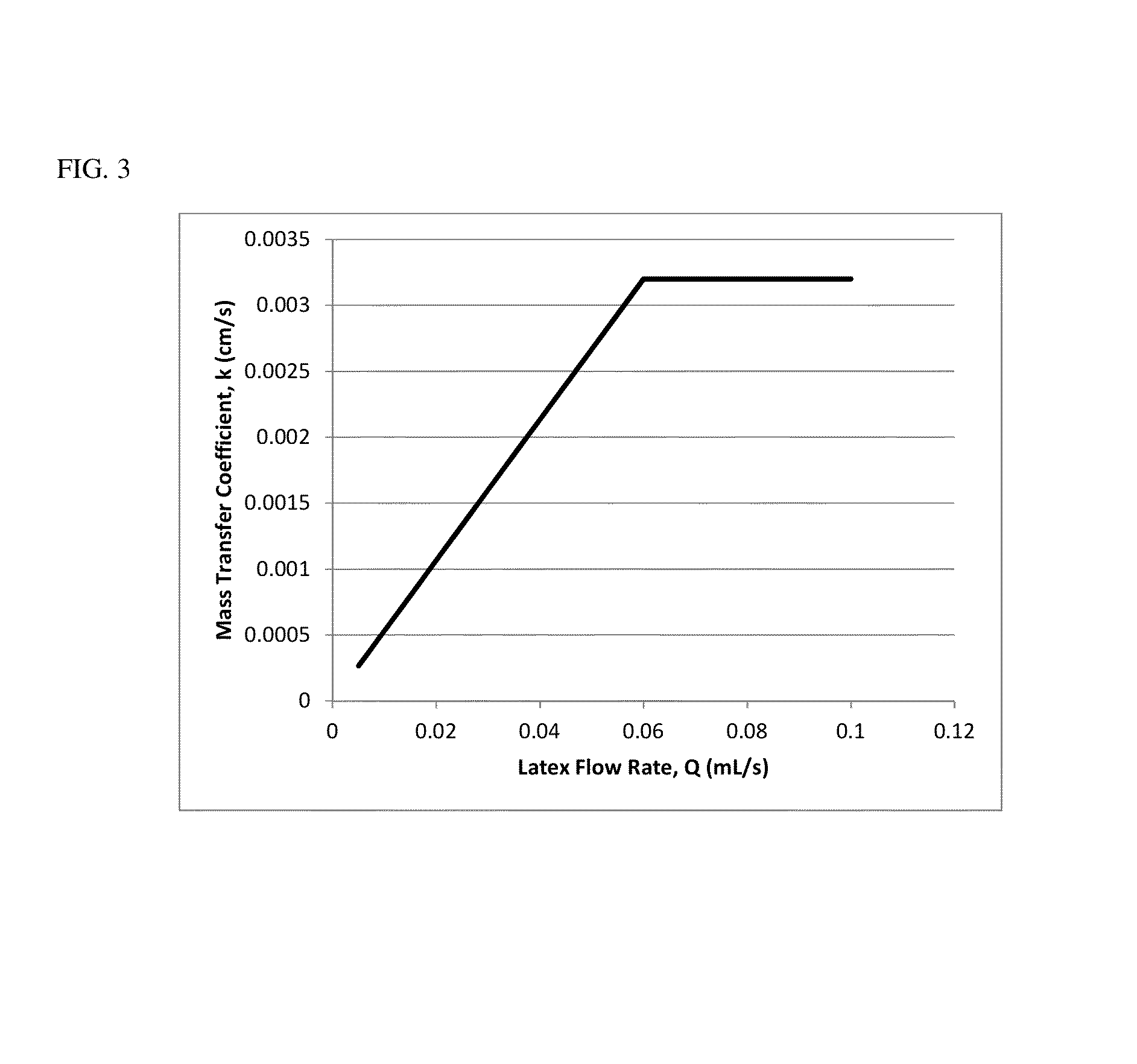Multiple membranes for removing voc's from liquids
- Summary
- Abstract
- Description
- Claims
- Application Information
AI Technical Summary
Benefits of technology
Problems solved by technology
Method used
Image
Examples
example 1
Extraction Optimization Using a 2-Stage Membrane
[0045]The following example demonstrates extraction optimization using a 2-stage membrane setup as shown in FIG. 1. The outlet latex VOC concentration for a 2-membrane system can be estimated when the inlet VOC concentration is known. If a latex inlet VOC concentration is 500 ppm and a feed rate of latex is 0.02 mL / s, the outlet VOC concentration is estimated to be 175 ppm using two membrane modules and no recycle of latex. The governing equation used for this calculation is as follows:
m(Cin-Cout)=kA(Cin-Cout)ln(CinCout)[0046]=flow rate of latex, mL / s[0047]in>=concentration of VOC in feed latex, ppm[0048]out>=concentration of VOC in exit latex, ppm[0049]=mass transfer coefficient, cm / s[0050]=membrane area, cm2
[0051]To lower the outlet VOC concentration, the recycle flow rate was increased but the net flow rate through each module was kept the same. For this example, enough latex was recycled to achieve a total flow rate to the module ...
PUM
| Property | Measurement | Unit |
|---|---|---|
| Permeability | aaaaa | aaaaa |
Abstract
Description
Claims
Application Information
 Login to View More
Login to View More - R&D
- Intellectual Property
- Life Sciences
- Materials
- Tech Scout
- Unparalleled Data Quality
- Higher Quality Content
- 60% Fewer Hallucinations
Browse by: Latest US Patents, China's latest patents, Technical Efficacy Thesaurus, Application Domain, Technology Topic, Popular Technical Reports.
© 2025 PatSnap. All rights reserved.Legal|Privacy policy|Modern Slavery Act Transparency Statement|Sitemap|About US| Contact US: help@patsnap.com



